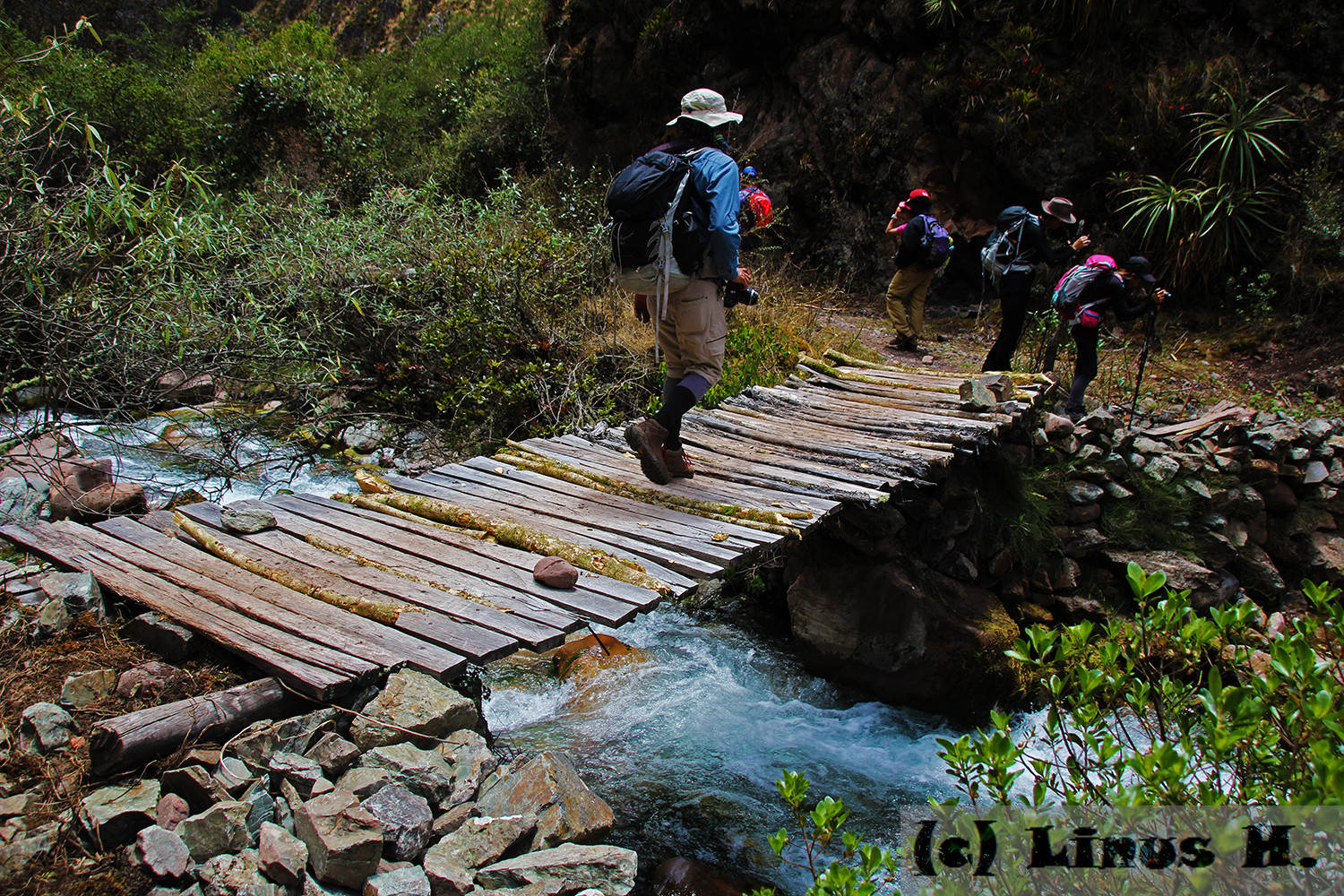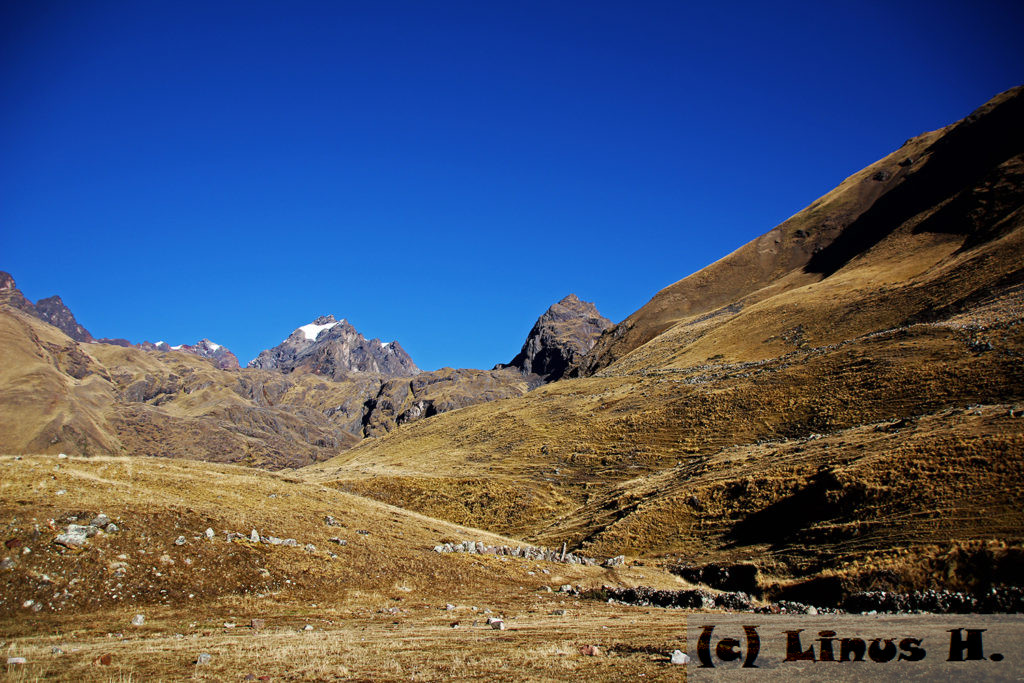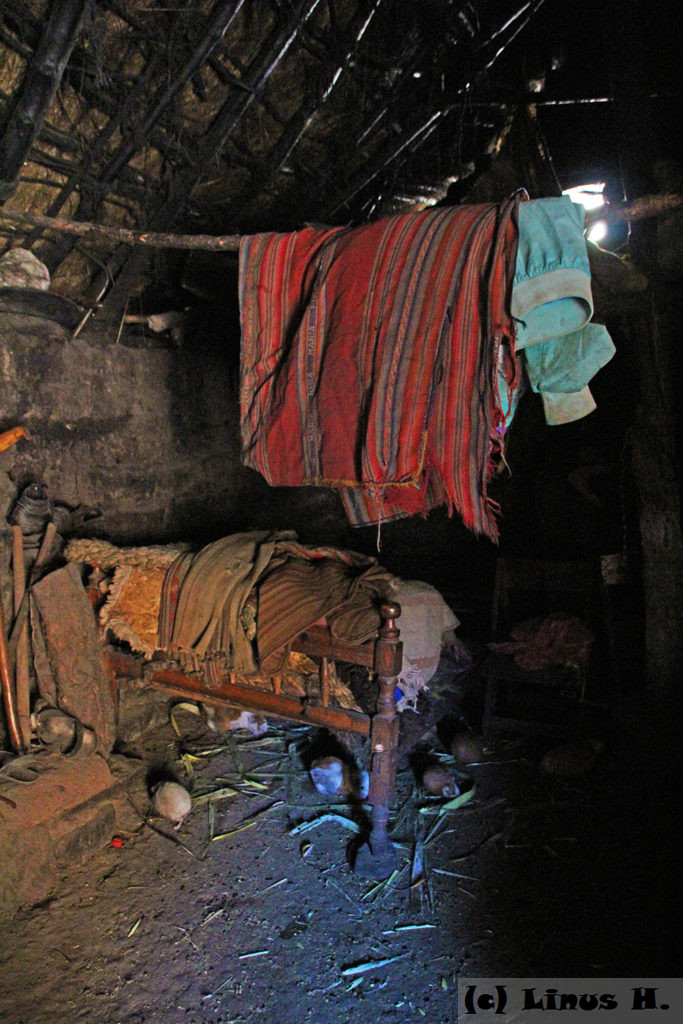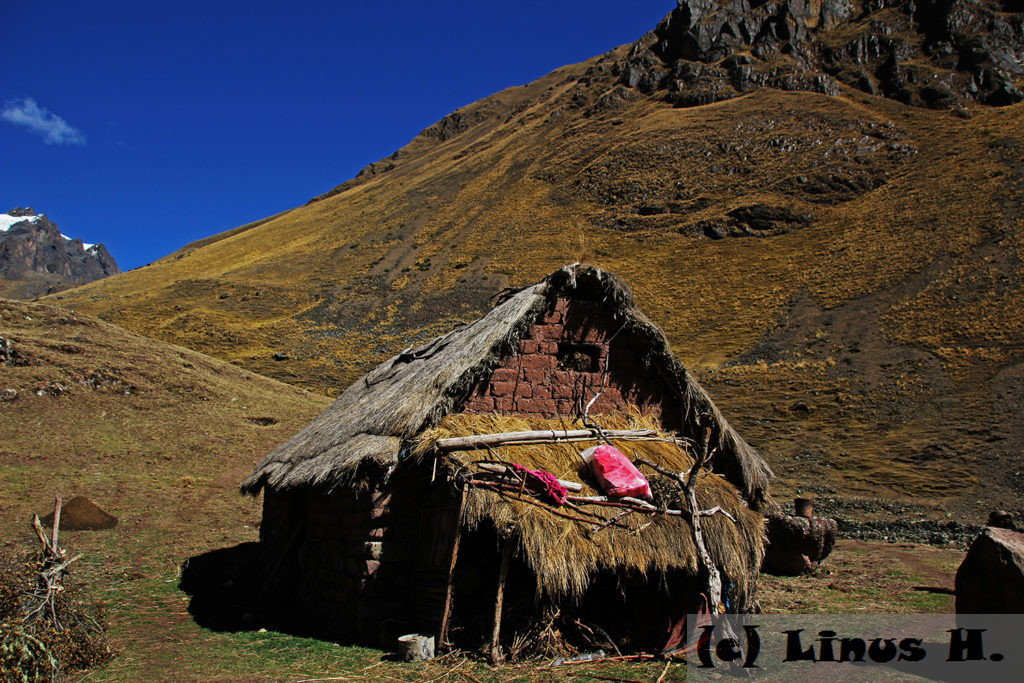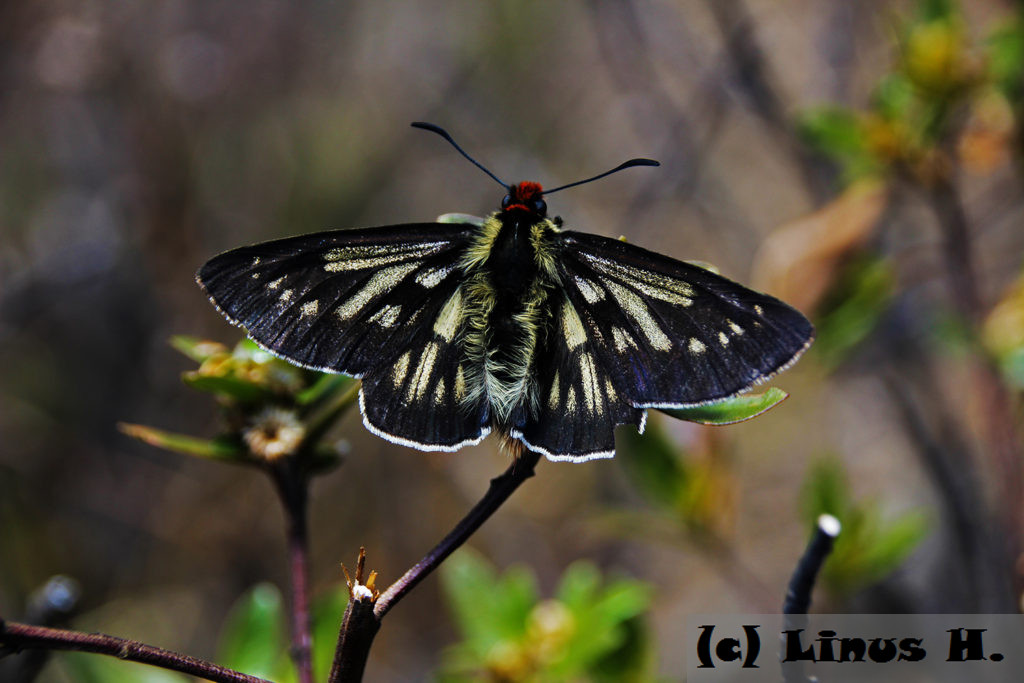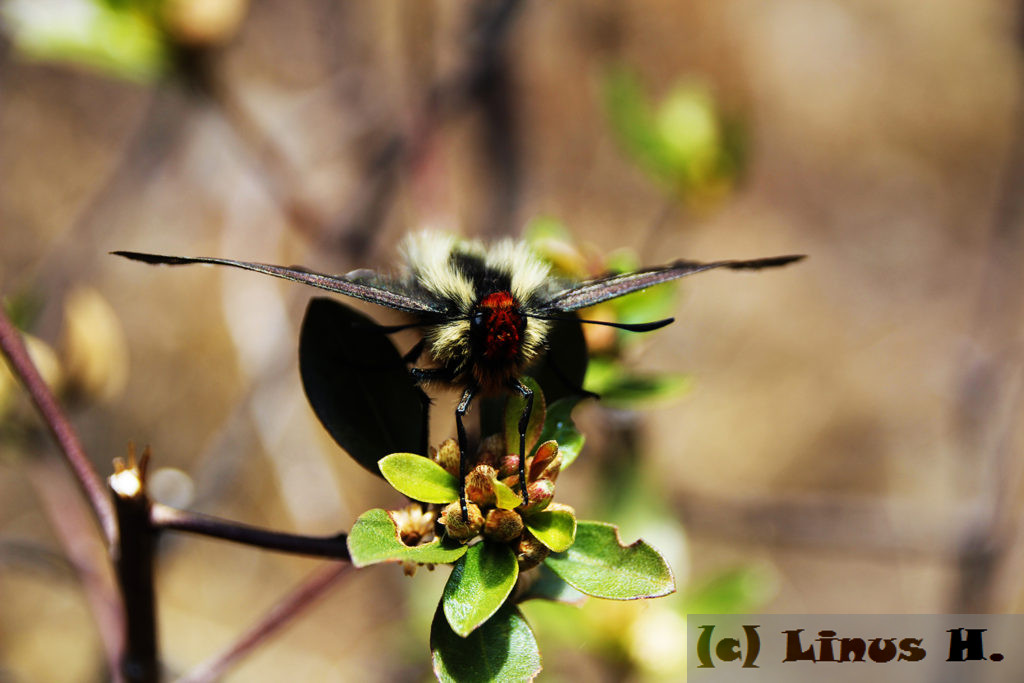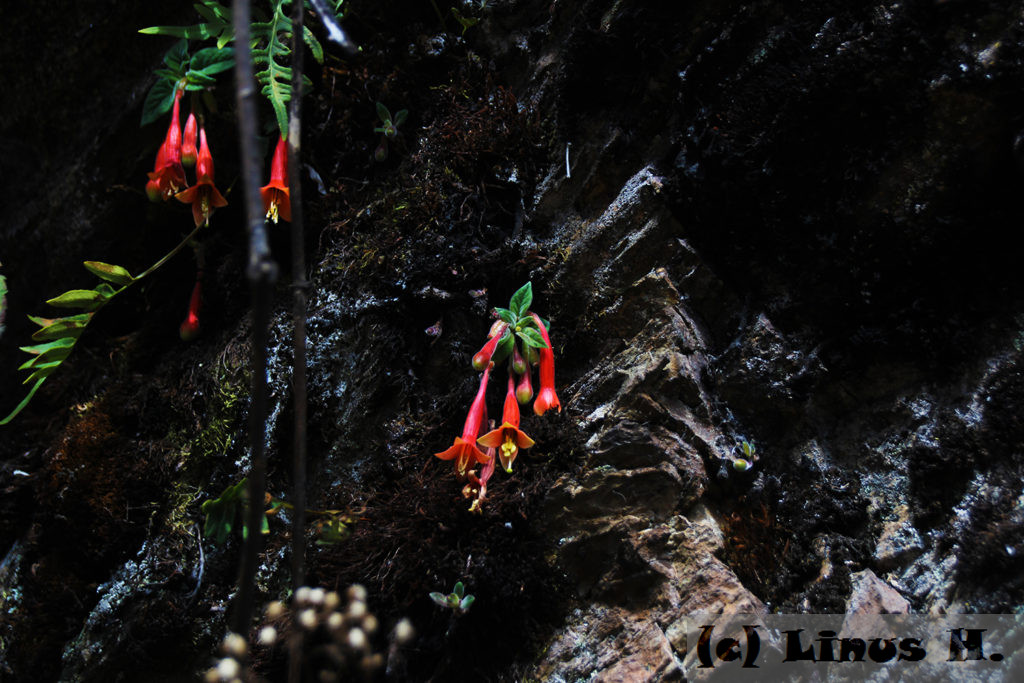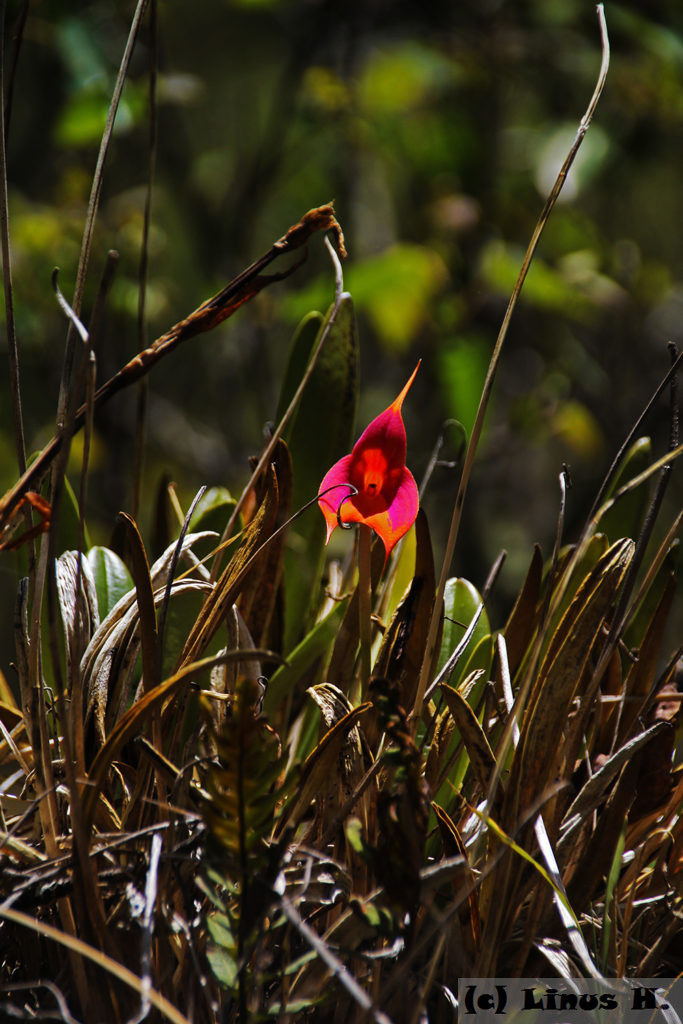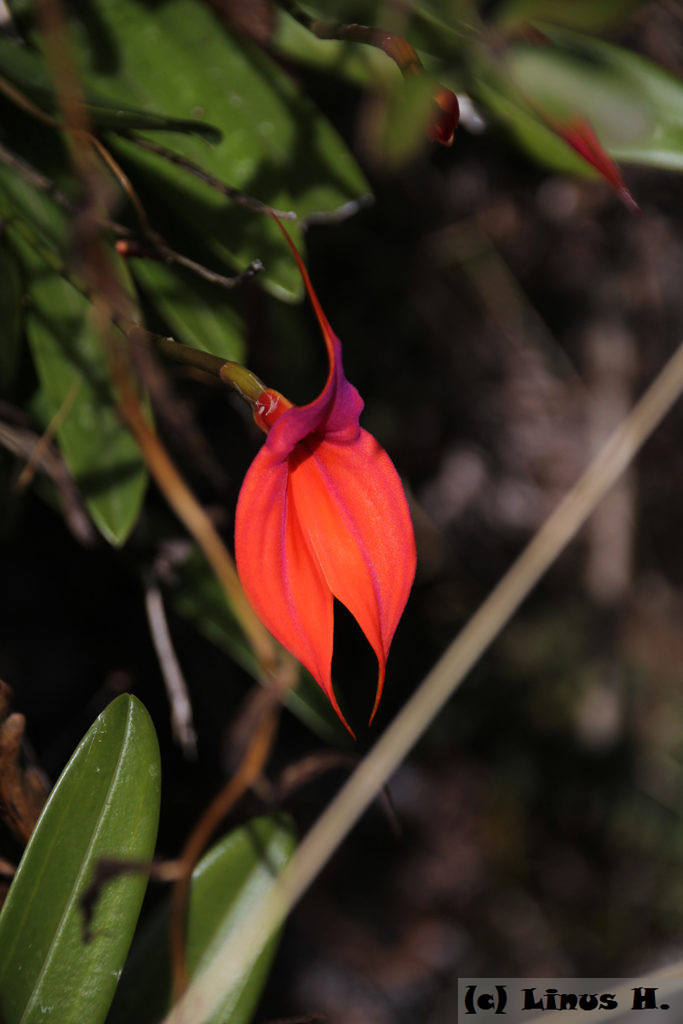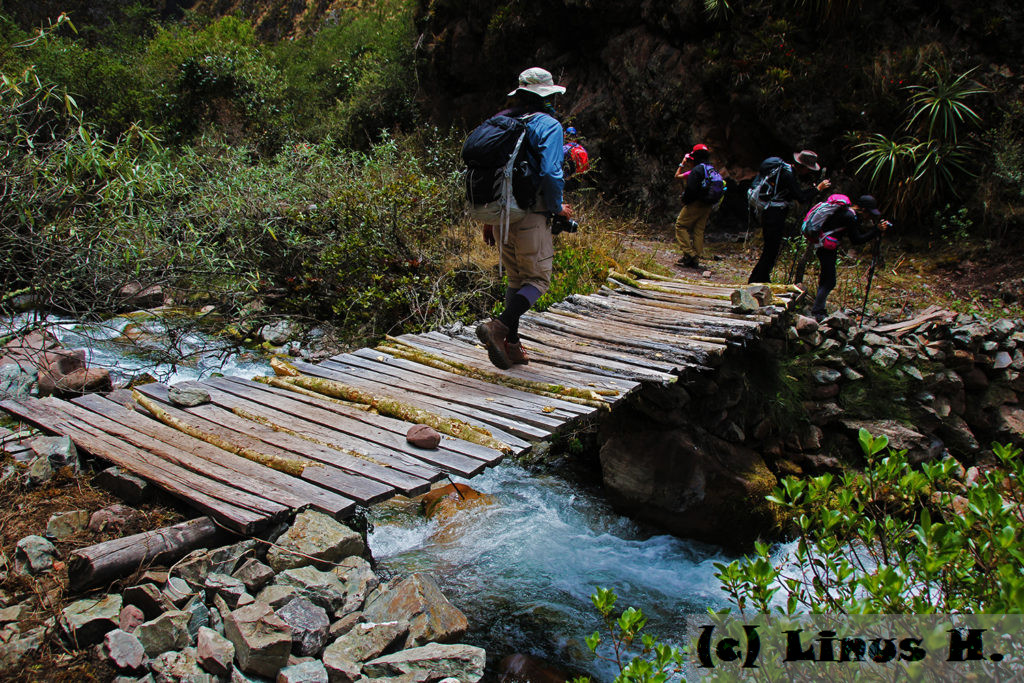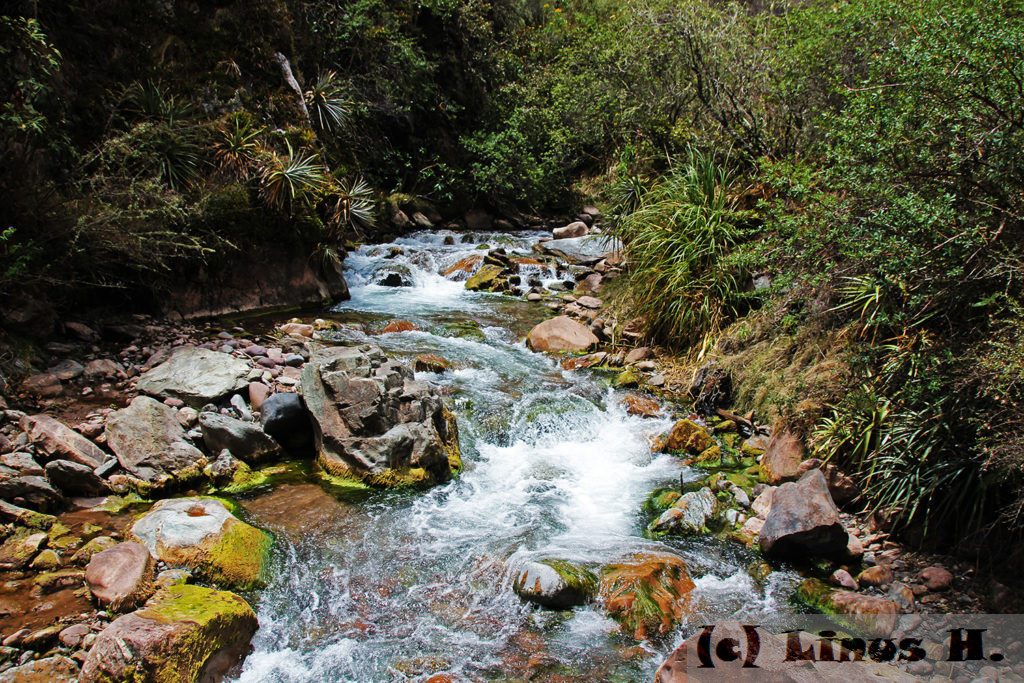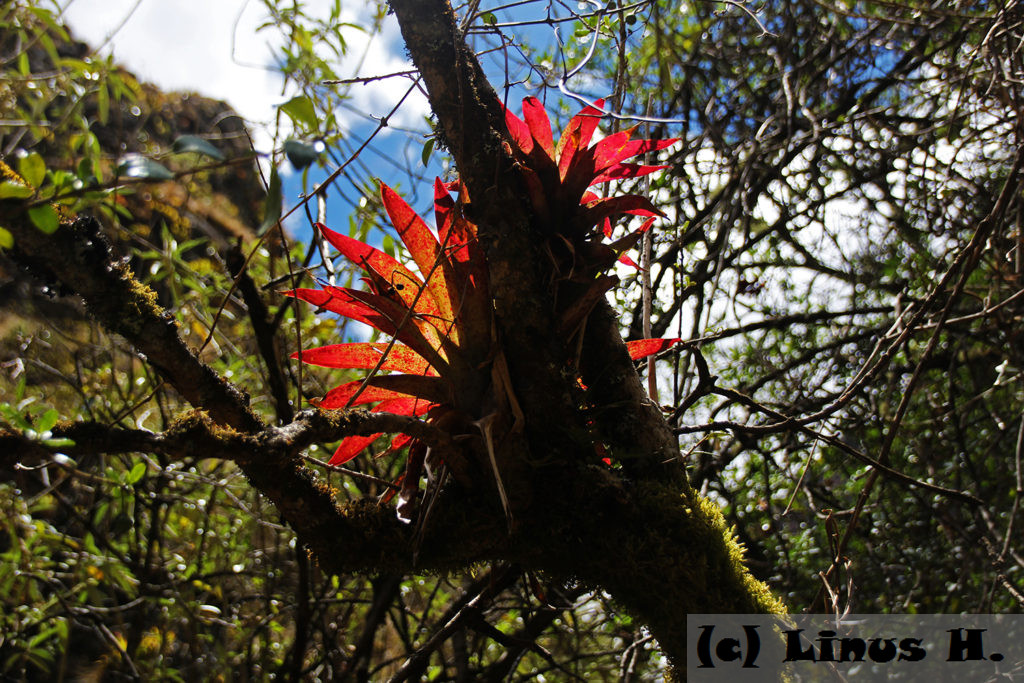The part of the valley we had slept in last night looked quite different in daylight. While there used to be about five families living here, now there are only three – even though the landscape is really quite amazing.
We were allowed to visit one local man’s house. Very similar to the family that we visited on my first weekend hike while I still lived in Urubamba, the house had no running water, no electricity and nearly no goods that were bought in a town. Cuy (guinea pigs) were all over the floor; as pets, and for food. Most of the things were handmade. This includes the roof, which has to be re-made every couple years from the very redundant Andean grass. The lady living in the house next door helps him; in return, he helps her. Mutual help and respect is the way that people get along in these small Andean communities.
This is the house of the woman living next door. Further up the valley, there are two more houses, but we didn’t get to meet their owners. Many of the people formerly living in this remote community left for the city in the hope for more opportunities and a better education. We saw the ruins of their houses, not much more than the foundations, on the way.
Then we began to go down the valley towards Ollyantaytambo, where our train to Macchu Picchu town would leave at around 4:30pm. At first, the valley was not much different than what we had seen for the last two days, but the lower and lower we got, and the close we got to the river at the bottom of the valley, the warmer and more tropical it got. We ended up hiking through the very edge of the rainforest, a cloud forest limited to the very bottom of the valley. I had always wanted to go to the rainforest, so this was king of a dream coming true for me. The flora and fauna was beautiful.
On the walls of the very narrow valley (which we call a “Kluft” in Austrian German) were these thin red flowers, which I already saw on the first day of the hike – the Peruvian national flower.
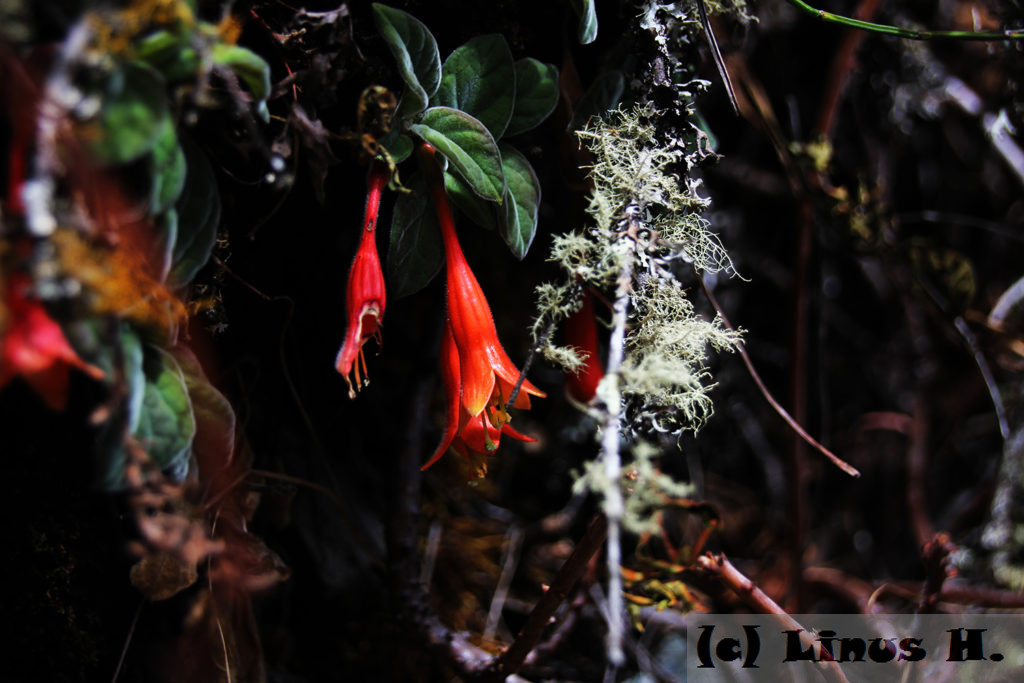 Another flower living in this valley was the “bloody tears” orchid, as our mountain guide called it – a vibrant, red/pink/purple orchid which covered entire segments of the valley’s walls.
Another flower living in this valley was the “bloody tears” orchid, as our mountain guide called it – a vibrant, red/pink/purple orchid which covered entire segments of the valley’s walls.
In total, we had to cross the river at the bottom of the valley nine times, using bridges that didn’t seem too trustworthy but added to the overall feeling of adventure and excitement.
The river itself was a typical river as you know it from photos of and documentaries about the rainforest – fast flowing, wild water through thick vegetation and with small waterfalls and whirlpools here and there.
Oh yea, another thing that you find in the rainforests are the epiphytes – plants that grow on larger plants and get all their water from the fog and humidity in the air, as well as stealing the nutrients and water of their host tree. Sometimes, epiphytes have their own ecosystems, with frogs and other small animals living inside the small pools that form between their leaves.
Our hike ended up being about an hour and several kilometers longer than we expected, because the bus that was meant to take us to Ollyantaytambo had not been able to reach the end of the valley because of construction on the only road there. So we had to hike all the way to the center of the Valle Sagrado, where we were then finally able to board the bus to the train station of Ollyantaytambo, from where we took the train (executive class!) to Macchu Picchu, where we all dropped dead in our hotel rooms at 11pm.
